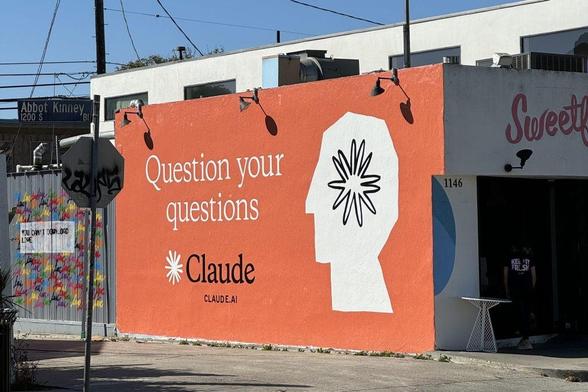UNPAID LABOR, ALGORITHMIC DENIAL, AND SYSTEMIC SABOTAGE
May 7, 2025
YouTube built an empire on our free time, our passion, our technical investments—and above all, on a promise: “share what you love, and the audience will follow.” Thousands of independent creators believed it. So did I. For ten years, I invested, produced, commented, hosted, edited, imported, repaired—with discipline, ambition, and stubborn hope, all in the shadows. What I discovered wasn’t opportunity. It was silence. A system of invisible filters, algorithmic contempt, and structural sabotage. An economic machine built on the unpaid, uncredited labor of creators who believed they had a chance. A platform that shows your video to four people, then punishes you for not being “engaging” enough. This four-part investigation details what YouTube has truly cost me—in money, in time, in mental health, and in collective momentum. Every number is cross-checked. Every claim is lived. Every example is documented. This is not a rant. It’s a report from inside the wreckage.
¯
_
INVISIBLE COMMENTS: 33,000 CONTRIBUTIONS THROWN IN THE TRASH
As part of my investigation, I decided to calculate what I’ve lost on YouTube. Not an easy task: if all my videos are shadowbanned, there’s no way to measure the value of that work through view counts. But I realized something else. The comments I leave on channels—whether they perform well or not—receive wildly different levels of visibility. It’s not unusual for one of my comments to get 500 likes and 25 replies within 24 hours. In other words, when I’m allowed to exist, I know how to draw attention.
¯
_
33,000 COMMENTS... FOR WHAT?
In 10 years of using the platform, I’ve posted 33,000 comments. Each one crafted, thoughtful, polished, aimed at grabbing attention. It’s a real creative effort: to spontaneously come up with something insightful to say, every day, for a decade. I’ve contributed to the YouTube community through my likes, my reactions, my input. These comments—modest, yes, but genuine—have helped sustain and grow the platform. If each comment takes roughly 3 minutes to write, that’s 99,000 minutes of my life—60 days spent commenting non-stop. Two entire months. Two months talking into the void.
¯
_
ALGORITHMIC INVISIBILITY
By default, not all comments are shown. The “Top comments” filter displays only a select few. You have to manually click on “Newest first” to see the rest. The way "Top comments" are chosen remains vague, and there’s no indication of whether some comments are deliberately hidden. When you load a page, your own comment always appears first—but only to you. Officially, it’s for “ergonomics.” Unofficially, it gives you the illusion that your opinion matters. I estimate that, on average, one out of six comments is invisible to other users. By comparing visible and hidden replies, a simple estimate emerges: over the course of 12 months, 2 months’ worth of comments go straight to the trash.
¯
_
TWO MONTHS A YEAR WRITING INTO THE VOID
If I’ve spent 60 days commenting over 10 years, that averages out to 6 days per year. Roughly 12 hours of writing every month. So each year, I’m condemned to 1 full day (out of 6) of content invisibilized (while 5 out of 6 remains visible), dumped into a void of discarded contributions. I’m not claiming every comment I write is essential, but the complete lack of notification and the arbitrary nature of this filtering raise both moral and legal concerns. To clarify: if two months of total usage equal 24 hours of actual writing, that’s because I don’t use YouTube continuously. These 24 hours spread across two months mean I spend about 24 minutes per day writing. And if writing time represents just one-fifth of my overall engagement — including watching — that adds up to more than 2.5 hours per day on the platform. Every single day. For ten years. That’s not passive use — it’s sustained, intensive participation. On average, this means that 15 to 20% of my time spent writing comments is dumped into a virtual landfill. In my case, that’s 24 hours of annual activity wiped out. But the proportion is what matters — it scales with your usage. You see the problem.
¯
_
THE BIG PLAYERS RISE, THE REST ARE ERASED
From what I’ve observed, most major YouTubers benefit from a system that automatically boosts superficial comments to the top. The algorithm favors them. It’s always the same pattern: the system benefits a few, at the expense of everyone else.
¯
_
AN IGNORED EDITORIAL VALUE
In print journalism, a 1,500-word exclusive freelance piece is typically valued at around €300. Most YouTube comments are a few lines long—maybe 25 words. Mine often exceed 250 words. That’s ten times the average length, and far more structured. They’re not throwaway reactions, but crafted contributions: thoughtful, contextual, engaging. If we apply the same rate, then 30 such comments ≈ €1,500. It’s a bold comparison—but a fair one, when you account for quality, relevance, and editorial intent. 33,000 comments = €1,650,000 of unpaid contribution to YouTube. YouTube never rewards this kind of engagement. It doesn’t promote channels where you comment frequently. The platform isn’t designed to recognize individuals. It’s designed to extract value—for itself.
¯
_
||#HSLdiary #HSLmichael
#DigitalLabor #InvisibleWork #ContentModeration #PlatformCapitalism #TechCriticism #UserEngagement
